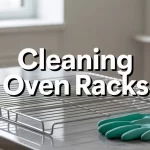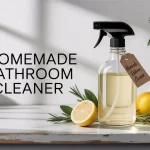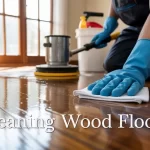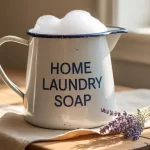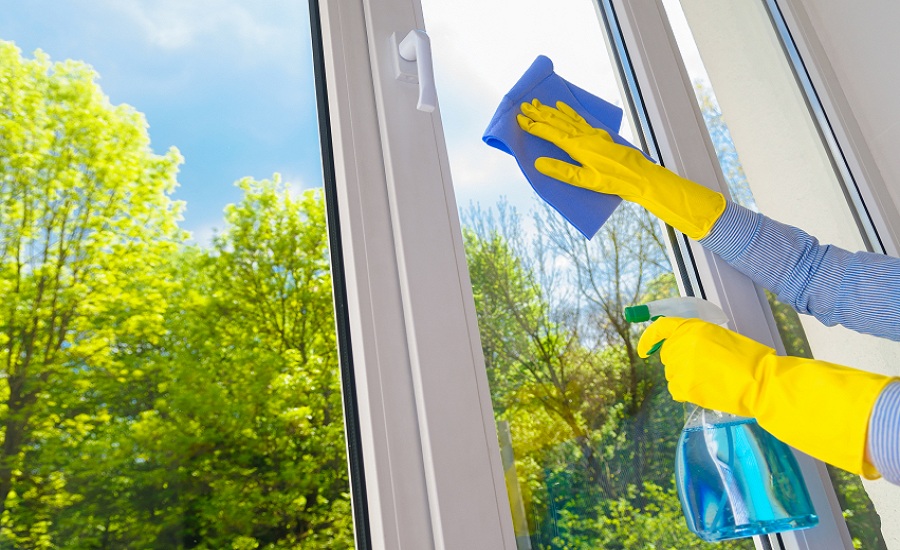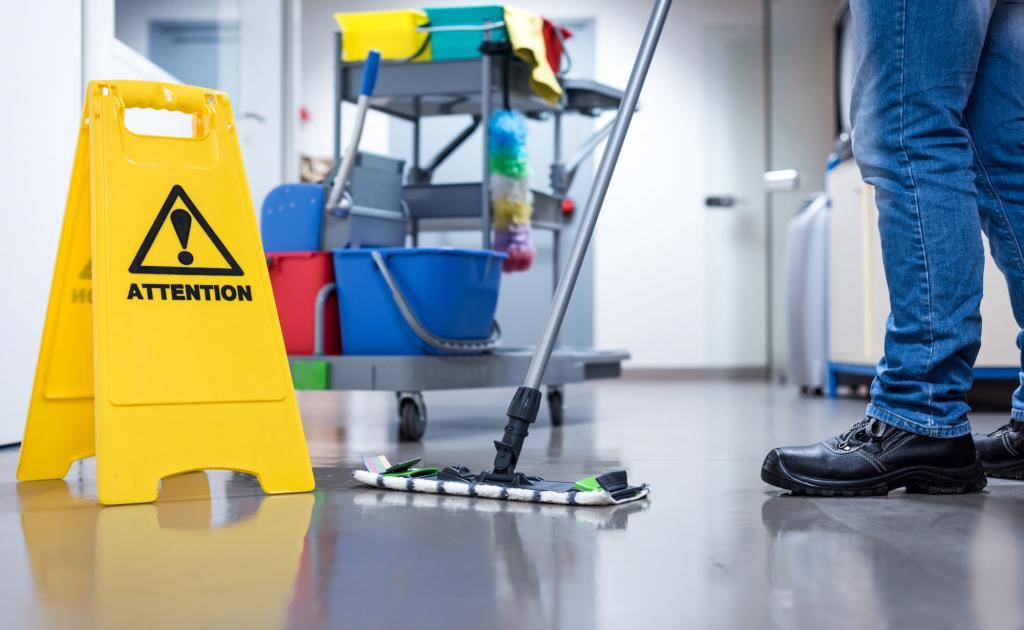Keeping your kitchen pans spotless can feel like a challenge, especially when grease, burnt food, or stubborn stains build up. Instead of relying on harsh chemicals, one of the easiest and most affordable methods is cleaning pans with baking soda. This natural solution not only removes dirt and grime but also keeps your cookware safe and long-lasting.
In this guide, we’ll explore the benefits of using baking soda, step-by-step cleaning methods, and tips for different types of pans. By the end, you’ll see why this simple ingredient is a must-have in every home.
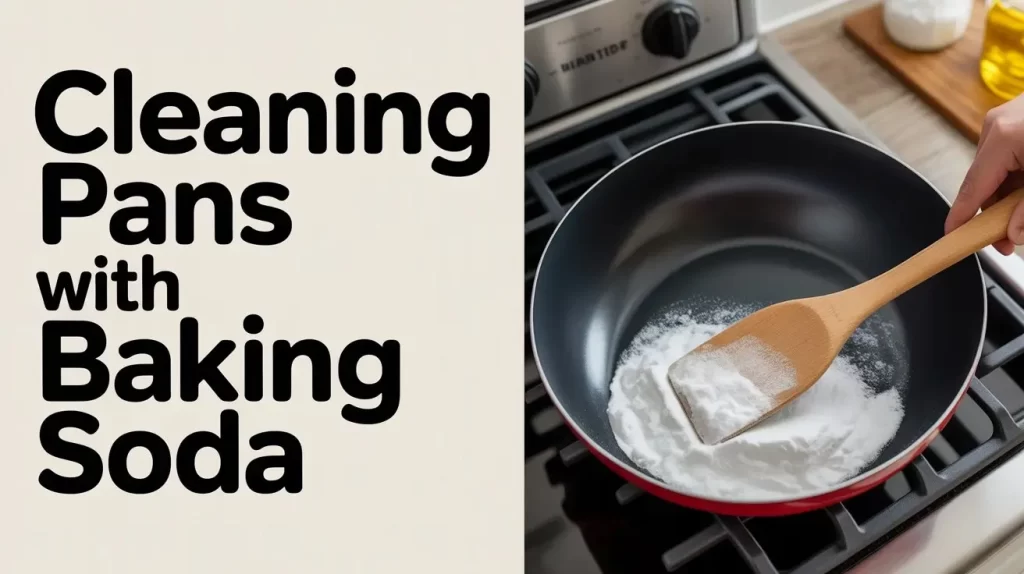
Content
Why Baking Soda Works for Cleaning
Baking soda, or sodium bicarbonate, is a natural cleaner with mild abrasiveness. It breaks down grease, neutralizes odors, and lifts stains without scratching surfaces. Unlike strong detergents, it’s safe for most cookware, including stainless steel, cast iron (with care), and nonstick pans.
According to studies from the Environmental Working Group (EWG), baking soda is classified as a non-toxic cleaner. It’s safe for both humans and the environment, making it an eco-conscious choice for households that want to reduce chemical use.
Step-by-Step Guide: Cleaning Pans With Baking Soda
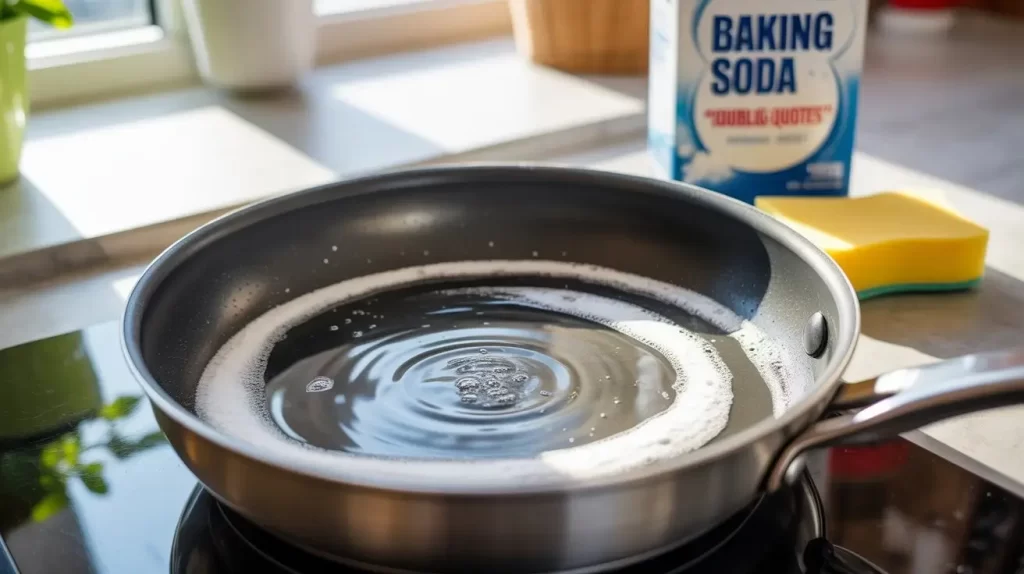
1. Basic Cleaning Method
For everyday mess, sprinkle baking soda directly onto the pan. Add a few drops of warm water to form a paste. Let it sit for 15 minutes, then scrub with a non-abrasive sponge. This lifts light stains and grease.
2. Deep Cleaning Burnt-On Food
Burnt pans can be frustrating. To clean them, cover the bottom with a layer of baking soda and hot water. Simmer on the stovetop for 10 minutes. Allow the mixture to cool, then scrub gently. The burnt residue will loosen easily.
3. Cleaning Stainless Steel Pans
Stainless steel cookware often develops rainbow discoloration or sticky residue. Sprinkle baking soda, add white vinegar, and watch the fizzing action cut through grime. Rinse with warm water for a polished shine.
4. Safe Method for Nonstick Pans
Nonstick coatings require gentle care. Mix baking soda with mild dish soap to create a smooth paste. Apply with a soft sponge and rinse thoroughly. Avoid abrasive scrubbing to preserve the coating.
5. Deodorizing with Baking Soda
Apart from cleaning, baking soda removes odors from pans. Simply sprinkle some on the surface, let it sit for a few hours, then rinse. This works especially well for pans used to cook fish or strong-smelling dishes.
Extra Tips for Maintaining Your Pans
- Avoid harsh scrubbers: Steel wool can scratch surfaces. Use microfiber cloths or sponges.
- Dry thoroughly: Always dry pans after washing to prevent rust and water spots.
- Use less oil when cooking: Preventing buildup reduces the need for frequent deep cleans.
- Combine with lemon juice: For extra shine, mix baking soda with lemon juice for a natural polish.
Eco-Friendly Benefits of Cleaning With Baking Soda
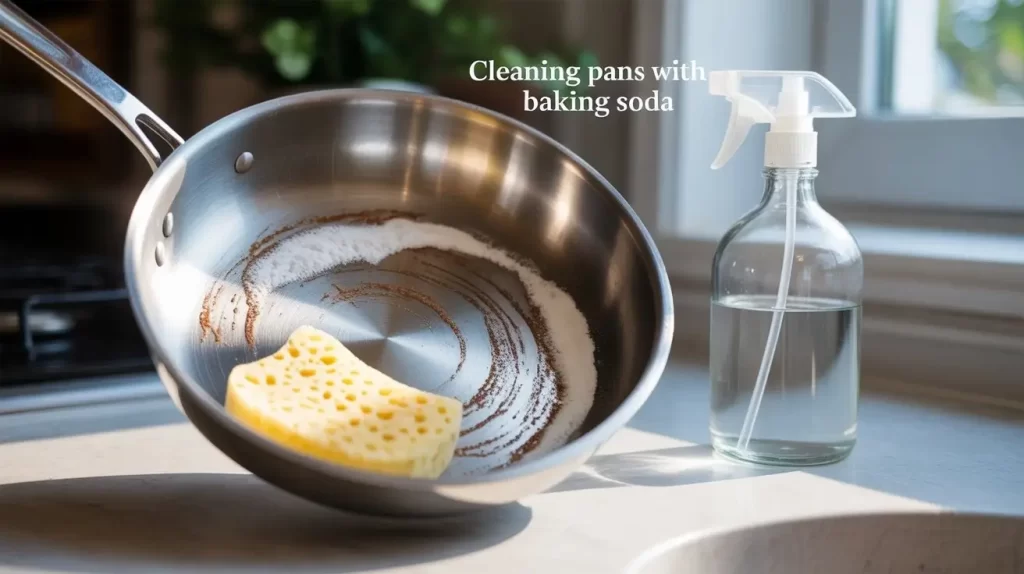
Switching to natural cleaners like baking soda is one of the best home cleaning tips to protect the planet. Research shows that chemical cleaners can harm aquatic life, while baking soda breaks down naturally without causing damage. This simple change reduces chemical waste in water systems and makes a big environmental difference.
Conclusion:
Cleaning pans with baking soda is one of the easiest and safest methods to maintain cookware. Whether it’s tough grease or burnt food, cleaning pans with baking soda delivers effective results without damaging surfaces or the environment. By regularly cleaning pans with baking soda, you not only protect your health but also save money. Adding cleaning pans with baking soda to your routine helps extend the life of your pans and keeps them looking new.
FAQs About Cleaning pans with baking soda:
Can you clean a pan with baking soda?
Yes, baking soda is safe and effective for cleaning pans. It removes grease, stains, and burnt food without harsh chemicals or scratching surfaces.
Is it okay to mix vinegar and baking soda to clean?
Yes, mixing vinegar and baking soda is safe. The fizzing reaction helps lift grime and grease, making it an effective natural cleaning solution for pans.
What should not be cleaned with baking soda?
Avoid using baking soda on aluminum cookware, gold, or delicate glassware, as it may leave scratches or dull the finish over time.
How long do you let baking soda and vinegar sit on a pan?
Let the mixture sit for about 10–15 minutes. This allows the fizzing reaction to loosen stuck-on food before gently scrubbing the pan clean.

Alexis is a dedicated home improvement blog author who has a passion for writing. She enjoys blogging about all sorts of topics, from interior design to landscaping and more! She loves the outdoors and spending time in nature with her family. She also likes to bake in her free time.


